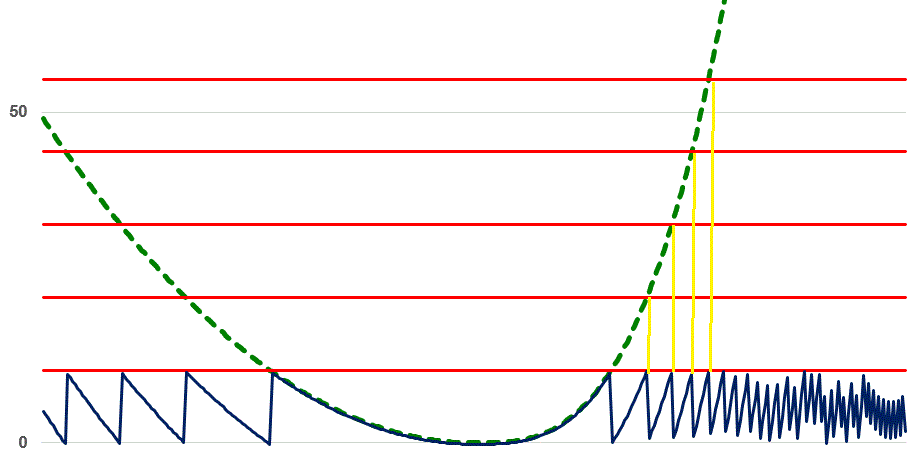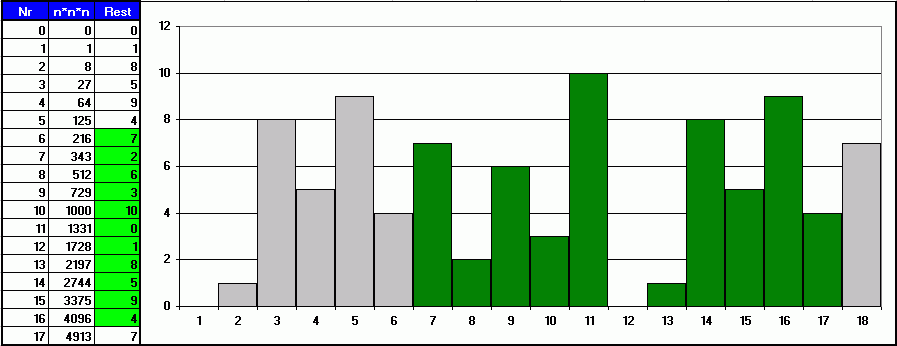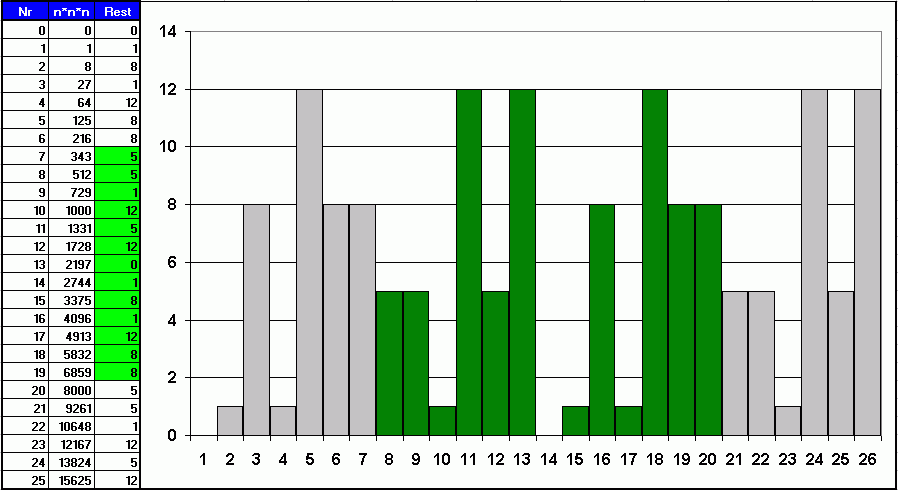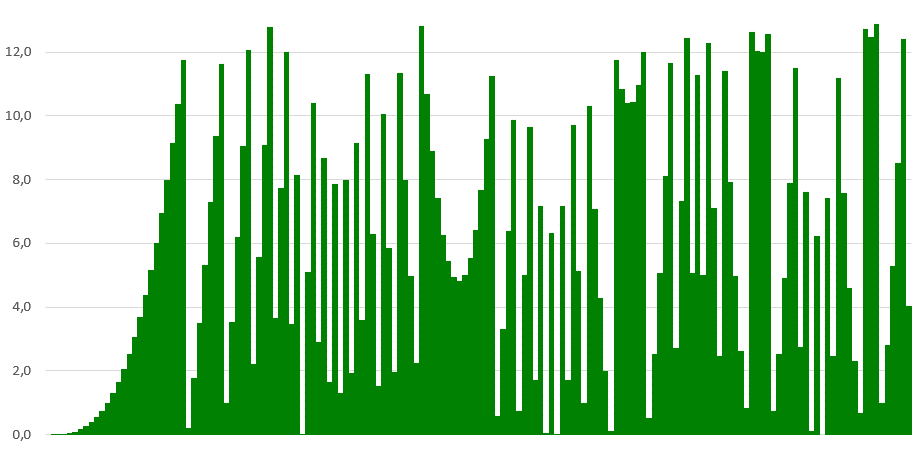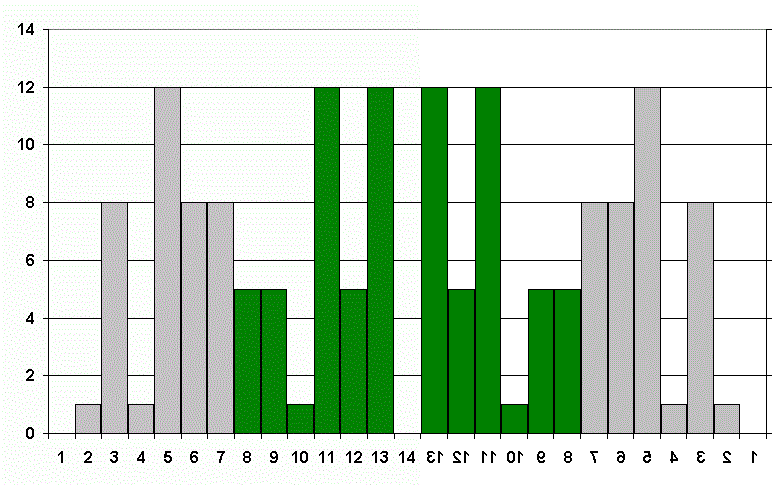| 96 kHz.org |
| Advanced Audio Recording |
|
Introduction to Cubic residue diffusers In modern studio design acoustic diffusers are used to control wall reflections and create a smoothed sound environment to make it easier for the mixing engineer to judge the true sound of a recording.
A common method of defining the wells' depth is to use the residue value derived from a division of the square of the coordinate and a fixed value, mostly a prime figure. Unlike as with common QR-diffusers a different equation is used here. Depending on the modulo value used for the divisor various structures can be achieved which lead to stronger scattering behavior than known from QRD-Designs.
Quadratic and Cubic residue values calculated by modulo function
CRD - Examples Two example configurations are shown below using dedicated offsets for the well number on order to optimize the height:
Cubic residue diffuser using 11 wells per period.
Cubic residue diffuser using 13 wells per period.
Special Issues Unlike the QRDs, these CRDs are not automatically symmetric themselves because of the repeated pattern derived from the modulo equation.
Even with sub divided well numbers and any kind of modulo value including even numbers there is no repetition of the pattern observable.
Therefore two of them shall be built and placed in beneath using an inverted well sequence for one of them leading to a fully symmetric diffuser.
Mirrored diffusor for symmetry. Mathematically this can also be done during calculation using values from -n ... 0 ... +n.
Conclusion and Summary Cubic equations can be used to obtain an alternative kind of sound diffusers. Typically deviation of the waves around the design frequency is significantly stronger because of the steepness auf the wall line. This possibly makes them more appropriate for smaller mixing rooms where there is low distance between the diffuser and the mixing engineer.
See the former article about QRD-diffusers See the other diffuser designs You may also want to have a look at the article Studio Design
|
| © 2005 J.S. |
